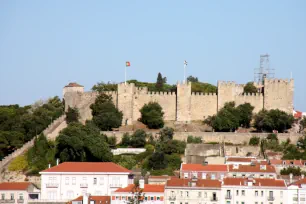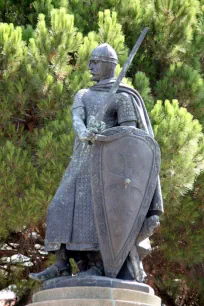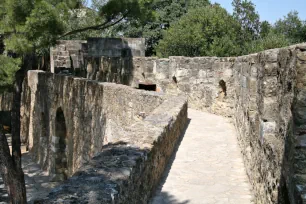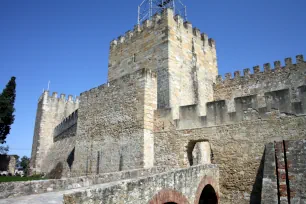St. George’s Castle is a medieval castle that overlooks Alfama, the oldest neighborhood in Lisbon. For centuries, the castle was the main residence of Portugal’s monarchs.
History

St. George’s Castle is strategically positioned on top of the highest hill in Lisbon. Even before the arrival of the Romans, there were fortifications at this site, but the current structure was built in the mid-eleventh century, during the Moorish era.
During the second crusade, the castle was the last stronghold in the defense against the Christian army, led by Portugal’s first king, Afonso Henriques. He finally captured the castle in 1147 with the help of northern European crusaders after a seventeen-week-long siege. It was a landmark victory in the Reconquista, the recapture of land on the Iberian Peninsula from the Moors.

The Castle of St. George became the main residence of the Portuguese kings, and in 1502 a palace was built within the castle walls to provide the monarchs more comfort. The castle was severely damaged by the 1755 earthquake, but it was partially renovated, and new buildings were added. The castle continued to be used for military purposes until the early twentieth century. Its present appearance dates back to the 1930s, when it was restored to its medieval state.
The Castle


The castle complex is enclosed by sturdy outer walls, from where visitors have a wide view over Lisbon.
The entrance to the complex leads to the Praça d’Armas (parade ground), an open plaza where a statue of Portugal’s first king stands amid the trees. From here, steps lead through a romantic garden with statues along the former royal palace of Alcáçova towards the fortified citadel. The sturdy-looking citadel is enclosed by ramparts that connect eleven crenelated towers. Visitors can walk all the way up to the ramparts and go from tower to tower.
The most central tower is the Torre de Ulísses (Tower of Ulysses), where the royal archives were stored. Inside is a camera obscura, an optical device invented by Leonardo da Vinci that projects live images from around the city onto the tower walls. To the right is the Tower of the Keep, the strongest of all towers and hence used as a command post. To the left of the Ulysses Tower is the Palace tower, named for the nearby Alcáçova palace, which now houses a restaurant and a museum. The museum displays a collection of archaeological finds excavated at the castle site.
Archaeological Site

A long rampart leads from the citadel east towards an archaeological site where remains of a Moorish quarter, a palace (the Palace of the Counts of Santiago) and Iron Age remains have been excavated.
The rampart passes the Moniz Gate, one of the castle’s three main gates. The gate is named after the nobleman Martim Moniz, who according to legend gave his life during the siege of 1147 by throwing himself in the closing gate, enabling the Christian troops entry to the castle.

